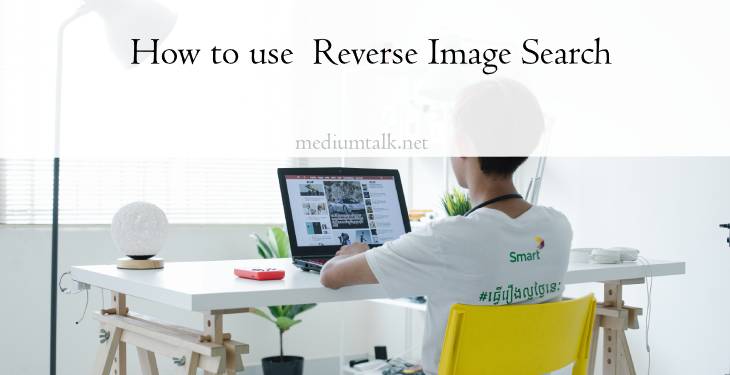Are you tired of scrolling endlessly through social media feeds, trying to find the source of a captivating image or looking for similar pictures? Look no further! In the digital age, reverse image search has become an invaluable tool for unraveling the mysteries behind any picture. Whether you are a curious individual wanting to learn more about a photograph or a professional searching for copyright violations, mastering the art of reverse image search can open up a world of possibilities at your fingertips.
What is Reverse Image Search?
Reverse Image Search is a powerful and versatile tool that allows users to conduct searches by using images rather than text. By uploading an image or pasting the URL into a search engine, users can discover similar or related images across the web. This process enables individuals to locate the original source of an image, identify unidentified objects or locations in a picture, or even track down visually similar images for various purposes.
One fascinating aspect of Reverse Image Search is its application in verifying the authenticity of online content. With the proliferation of fake news and manipulated images on the internet, this tool plays a crucial role in fact-checking and debunking misinformation. Additionally, Reverse Image Search aids creative professionals in identifying copyright violations by locating unauthorized uses of their work online. This feature not only protects intellectual property but also ensures that proper attribution is given to creators.

Benefits of Using Reverse Image Search
Reverse image search is an incredibly versatile tool that can be used for more than just casual curiosity. One of its key benefits is in online shopping, where it allows users to find similar products or better deals by uploading an image of an item they are interested in. This not only saves time but also helps in making informed purchasing decisions. Furthermore, reverse image search is a valuable asset for artists and photographers as they can track down unauthorized use of their images online and take necessary action to protect their work.
Another advantage of using reverse image search is its utility in verifying the authenticity of information found online. With the ability to trace back the origins of an image, users can spot fake news or misinformation circulating on social media platforms. This feature empowers individuals to critically evaluate content before sharing it further, thus contributing towards combatting the spread of false information across the internet. Overall, integrating reverse image search into everyday browsing habits can enhance digital literacy and encourage a more discerning approach towards consuming content online.
Different Tools and Platforms Available
When it comes to conducting a reverse image search, there are several tools and platforms available that can help you streamline the process. Google Images is one of the most popular choices for reverse image searches, offering a user-friendly interface and high accuracy in matching images. You simply upload an image or paste the URL to find similar images or information related to the picture.
Another powerful platform for reverse image searching is TinEye, known for its comprehensive index of billions of images. This tool allows users to search by uploading an image or entering a URL and provides detailed results on where else on the web that same image appears. Additionally, Pinterest Lens is gaining popularity as a visual discovery tool that enables users to find visually similar items based on uploaded images rather than keywords alone. It’s particularly useful for identifying fashion pieces, home decor items, and other visual products.

Step-by-Step Guide to Conducting a Search
Step 1: Choose the right tool for the job. There are various platforms available for conducting a reverse image search, each with its own unique features and capabilities. Take some time to explore these options to find the one that best suits your needs.
Step 2: Upload or paste the image you want to search. Once you’ve selected your preferred tool, simply upload the image from your device or paste the URL where it is located online. The search engine will then scan and analyze the image to provide you with relevant results in just a few seconds.
Step 3: Review and analyze the search results. After conducting your search, carefully examine the results provided by the tool. Look for any matches or similar images that may lead you closer to discovering more information about where an image came from or how it’s being used online.
Tips for Maximizing Results
When using reverse image search, it’s important to maximize your results by following these 5 tips:
- Use Multiple Search Engines: Different search engines may yield different results, so try using multiple platforms such as Google Images, Bing Visual Search, and TinEye for comprehensive coverage.
- Experiment with Keywords: Don’t limit yourself to just one or two keywords when describing the image you are searching for. Try various combinations and synonyms to expand your search parameters.
- Filter Results: Take advantage of the filtering options provided by the search engines to narrow down your results based on factors like size, color, type, and date modified. This can help you find more relevant matches quickly and efficiently.
- Check Similar Images: When you find a potential match through reverse image search, don’t stop there. Explore similar images that are linked or related to get a broader perspective or discover more details about the image in question.
- Consider Reverse Image Add-Ons: There are browser extensions and add-ons available that enhance reverse image search capabilities. For instance, tools like RevEye for Firefox or Image Search Options for Chrome can streamline the process and provide additional features for better results.
Potential Uses in Various Situations
- Fashion Inspiration: Reverse image search can be a game-changer for fashion enthusiasts looking for outfit inspiration. By uploading a photo of an outfit or accessory you like, you can easily find similar items or identify the brands and designers behind them. This can help you recreate trendy looks, discover new style options, and stay ahead in the fashion game.
- Identifying Artwork: For art lovers and collectors, reverse image search offers a valuable tool to identify unknown artworks or track down specific pieces from galleries or auctions. Simply take a photo of the artwork or upload an image from online sources to search for relevant information such as artist details, artwork title, and historical background. This can enhance your art appreciation experience and facilitate your quest for unique masterpieces.
- Travel Planning: When planning your next travel adventure, reverse image search can assist in finding more details about locations captured in images or photographs. By searching for scenic views, landmarks, or hotel exteriors through images, you can uncover additional travel tips, reviews from other visitors, and even hidden gems to explore during your trip. This innovative approach allows travelers to visually navigate destinations and curate personalized itineraries based on authentic experiences showcased in images.
Conclusion: Enhancing Your Online Experience
In conclusion, enhancing your online experience through the use of reverse image search can greatly improve your browsing habits and digital safety. By utilizing this powerful tool, you gain the ability to verify the authenticity of images, prevent falling victim to scams or misinformation, and discover more about the visuals that capture your interest. This technology opens up a world of possibilities in terms of research, fact-checking, and creative inspiration.
Take advantage of reverse image search to unlock a whole new level of exploration on the internet. Whether you are a professional researcher, a casual browser, or an avid social media user, incorporating this tool into your online toolkit will undoubtedly enhance your overall digital experience. Embrace curiosity and harness the power of visual recognition technology to navigate the vast sea of information available at your fingertips with confidence and ease. With just a few clicks, you can unveil hidden connections, unearth valuable insights, and uncover new perspectives that enrich your online journey in ways you never imagined possible.

